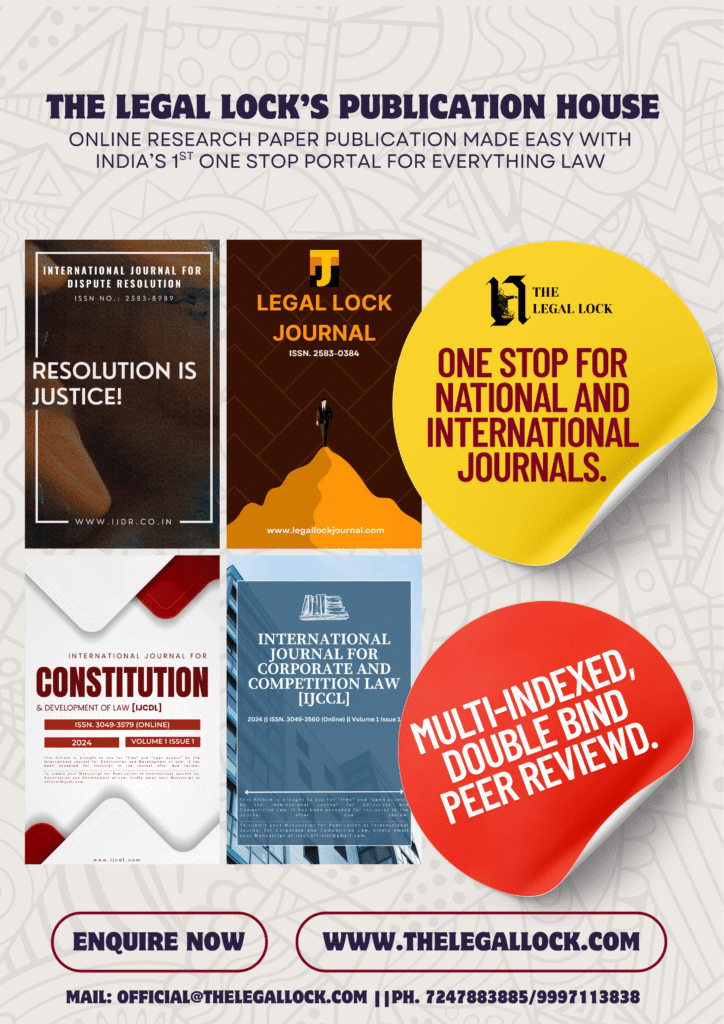Case Brief: Regional Provident Fund Commissioner vs. Sanatandharmgirls Secondary School and Others (2007)

INTRODUCTION
The case of “Regional Provident Fund Commissioner vs. Sanatandharmgirls Secondary School and Others (2007)” is an important judicial observation which examines the complex relationship between central and state enactments in respect of social security benefits for teachers of non-government educational institutions. In essence, the case struggles with whether or not the “Employees’ Provident Funds and Miscellaneous Provisions Act, 1952 (the “EPF Act”)” applies to education institutions located in the State of Rajasthan, which were at the same time controlled by the Rajasthan Non-Government Educational Institutions Act, 1989 (the “State Act” for short), a state law with provisions for provident fund benefits. This is a legal controversy that was prompted by the attempt of the Regional Provident Fund Commissioner to bring the provisions of the EPF Act to non-governmental educational institutions in Rajasthan based on a Central Government notification made in 1982 which extended the operation of the EPF Act to educational institutions.
The respondent institutions, however, objected to such application on the grounds that they were within the exemption provided for under “Section 16(1)(b) of the EPF Act”. This section also exempts business establishments “belonging to or under control of the Central Government or a State Government” and whose staff is eligible to provident fund benefits under a scheme framed by the concerned government. The High Court of Rajasthan, in its ruling, ruled in favour of the educational institutions, holding that the overall regulatory scheme created by the State Act, including provisions for provident funds, brought these institutions “under the control of” the State Government for the purposes of exemption under the EPF Act. Complaining about this ruling, the “Regional Provident Fund Commissioner” went to the Supreme Court, resulting in the landmark ruling that is the subject of this analysis.
This case is important for determining the principles of legislative competence, statutory exemption interpretation, and the fine balance between central and state power in issues of social welfare and education.
FACTS
The seeds of this judicial controversy were planted in 1982 when the Central Government, exercising its jurisdiction under the EPF Act, issued a notification expanding the coverage of the Act to different types of educational institutions having twenty or more employees. This notification placed non-governmental educational institutions in the potential sphere of the EPF Act, requiring them to comply with its provisions for the creation and management of provident funds for their employees.
Later, the State of Rajasthan passed the Rajasthan Non-Government Educational Institutions Act in 1989, which was brought into force in 1993. The State Act was intended to control the recognition, administration, and management of non-governmental educational institutions in the state. Importantly, it also had provisions authorizing the State Government to make rules concerning the provident fund benefits of the employees of these institutions. Under this authority, the State Government designed a provident fund scheme for the employees of Rajasthan non-governmental educational institutions. Before the RPFC took over to implement the EPF Act, the majority of Rajasthan non-governmental educational institutions had already been granting provident fund benefits to their employees under the scheme framed under the State Act
When the RPFC attempted to bring these institutions under the EPF Act, they resisted on the ground that they were exempted under “Section 16(1)(b) of the EPF Act”. Their main argument was that the pervasive control exercised by the State Government over their activities, as required by the State Act, combined with the fact of a scheme of a state-governed provident fund for their workers, brought them well within the ambit of the exemption. The RPFC contended, however, that the institutions were in effect private organizations, controlled by registered societies or trusts, and that regulatory control by the State Government was not tantamount to being “under the control of” the State Government in the sense intended by “Section 16(1)(b).”
The RPFC held that the 1982 Central Government notification was directly enforceable, and the institutions were bound to act in accordance with the EPF Act provisions. This conflict in interpretation resulted in the institutions’ filing writ petitions with the High Court of Rajasthan against the applicability of the EPF Act and mirror writ petitions by the RPFC to enforce the same.
ISSUE RAISED
1. Applicability of Central Legislation: Does the Employees’ Provident Funds and Miscellaneous Provisions Act, 1952, extend to non-governmental educational institutions within the State of Rajasthan?
2. State Regulatory Framework: Does the fact that the Rajasthan Non-Government Educational Institutions Act, 1989, and the regulatory powers under this Act invest in the State Government, exclude the application of the EPF Act to these institutions?
3. Meaning of “Under the Control of the State Government”: For the exemption under “Section 16(1)(b) of the EPF Act”, does the overall regulatory control exercised by the State Government over non-governmental educational institutions in Rajasthan under the State Act amount to being “under the control of the State Government”?
4. Availability of a State Provident Fund Scheme: Does the payment of provident fund benefits to the staff of such educational institutions under a scheme formulated by the State Government, in exercise of the powers delegated by the State Act, fulfill the second requirement for exemption under “Section 16(1)(b) of the EPF Act”?
5. Harmonious Interpretation of Statutes: Ought the EPF Act and the Rajasthan Non-Government Educational Institutions Act, 1989, to be harmoniously interpreted in order to prevent duplication and possible conflict in the regulation of provident fund benefits of employees of such educational institutions?
6. Scope of Central Government Notification: Does the Central Government notification in 1982 of extending the EPF Act to educational institutions preempt the possible exemption under “Section 16(1)(b)” in situations where the State Government has a controlling interest and is providing a like benefit?
PETITIONER’S ARGUMENTS
The learned counsel representing the Regional Provident Fund Commissioner put forth the following prime arguments before the Supreme Court:
• Direct Application of the Central Notification: The main argument was that the 1982 notification by the Central Government clearly brought within its application all educational institutions with twenty or more employees, regardless of their governmental character or whether state regulations existed. Such respondent institutions qualifying under this standard were thus bound directly under the EPF Act.
• Restrictive Interpretation of “Under the Control”: The petitioner argued that the expression “under the control of the State Government” in “Section 16(1)(b)” must be interpreted narrowly and literally. Merely regulatory control or authority to prescribe terms of service, as authorized under the State Act, did not constitute the type of direct and pervasive control required to render an institution “under the control of” the State Government. The control, under the petitioner’s view, must be of the nature of ownership or direct management by the government.
• Distinction Between Regulation and Control: The petitioner highlighted the distinction between regulation and control. Although the State Act certainly regulated the operation of non-governmental educational institutions, it did not confer such a level of control upon the State Government as to bring these institutions on par with government-controlled institutions. They were still privately managed institutions, though subject to state regulations.
• Absence of a Comprehensive State-Administered Provident Fund Scheme: The petitioner could have contended that the provident fund scheme under the State Act, though present, may not be as comprehensive or uniformly administered as the scheme under the EPF Act and therefore the application of the central legislation was necessary to provide greater protection to the employees.
RESPONDENT’S ARGUMENTS
The learned counsel for the respondent schools argued against the petitioner on the following submissions:
1. Pervasive Control Under the State Act: The respondents pointed out the widespread and pervasive control which is exercised by the State Government over Rajasthan non-governmental educational institutions through the State Act provisions. They pointed out to provisions on matters of recognition, grant-in-aid, management committees, appointment and conditions of service of teachers and other staff, accounts and maintenance thereof, inspections, and even the right of the State Government to take over management of defaulting institutions. This holistic regulatory regime, they contended, unambiguously determined that these institutions were “under the control of” the State Government.
2. Satisfaction of the Exemption Conditions: The respondents reiterated that the second requirement for exemption under “Section 16(1)(b)” also stood satisfied because their employees were actually entitled to the benefit of a contributory provident fund under a scheme formulated by the State Government as per the power vested in the State Act. The scheme did offer a social security net for the employees and satisfied the real purpose behind the legislation of provident funds.
3. Congruous Interpretation of Statutes: The respondents were in favour of a harmonious interpretation of the EPF Act and the State Act. They submitted that enforcement of the EPF Act upon institutions already giving provident fund benefits under a state-controlled scheme would cause duplication, administrative load, and also conflict between the two regimes of regulation. Legislative intent underlying “Section 16(1)(b)” was actually to eschew such a situation wherein proper social security was already available under governmental regulation.
4. Substantial Compliance with Social Security Aims: The respondents contended that the provident fund scheme of the State Act was sufficient to fulfill the function of giving social security to their employees, which was the main purpose of the EPF Act. Thus, requiring them to be compliant with the EPF Act would by no means promote the welfare of their employees but impose yet another level of compliance instead.
JUDGEMENT
The High Court decision was upheld by the Supreme Court, which rejected the RPFC’s appeal. The Court held that non-governmental educational institutions in Rajasthan are “under the control of” the State Government as defined in “Section 16(1)(b)” of the EPF Act. The finding was predicated on the extensive regulatory powers conferred on the State Government under the Rajasthan Non-Government Educational Institutions Act, 1989, relating to their recognition, management, finances, and service conditions of employees. In addition, the Court pointed out that these institutions were already offering provident fund benefits to their employees under a scheme designed by the State Government, which met the second requirement for exemption under “Section 16(1)(b)”. The Court underlined the importance of harmonious interpretation of central and state statutes, finding that enforcing the EPF Act in this regard would be superfluous in view of the already existing state-regulated social security arrangement.
CONCLUSION
The Supreme Court reinforced the High Court judgment, and the RPFC’s appeal was dismissed. According to the Court, non-government schools in Rajasthan are “under the control of” the State Government as stipulated in “Section 16(1)(b)” of the EPF Act. This classification arose from the broad regulatory powers assigned to the State Government through the Rajasthan Non-Government Educational Institutions Act, 1989, relating to their recognition, running, funds, and worker service conditions. In addition, the Court observed that these institutions were already offering provident fund benefits to their employees under a scheme designed by the State Government, fulfilling the second requirement for exemption under “Section 16(1)(b)”. The Court insisted on harmonious interpretation of central and state legislation, holding that the application of the EPF Act in this regard would be redundant in light of the prevailing state-controlled social security mechanism.







